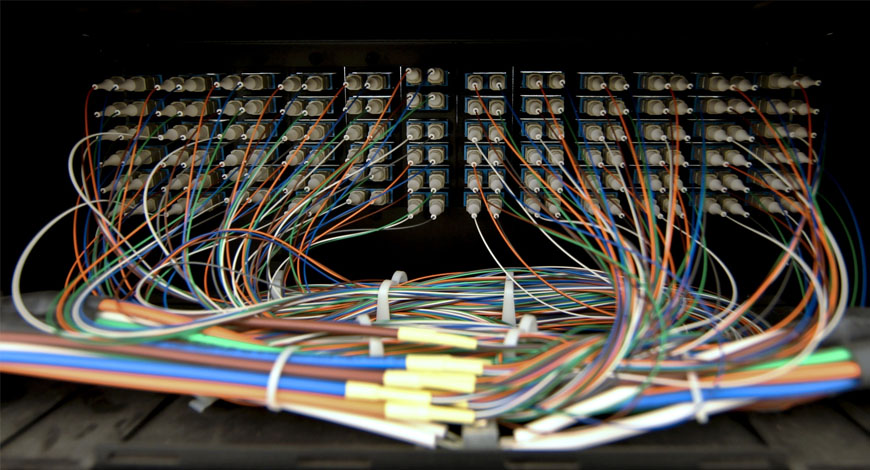Trends
Goldman sees fiber securitizations topping $5 billion in 2024

Telecommunications companies are piling into fiber securitizations, raising financing expected to top $5 billion this year to help fund society’s growing need for data to power almost everything, according to Goldman Sachs Group Inc., which helped pioneer the asset class.
“The latest deals have made a lot of people focus on securitization as an option for themselves,” said Kelly Mellecker, managing director in structured finance at Goldman. “Issuers are getting inbounded by their own investors saying, ‘Are you looking at this product?’”
Mellecker spoke to Bloomberg’s Carmen Arroyo over a series of interviews that ended on April 4. Here are some highlights of the conversation, condensed and edited for clarity.
Bonds backed by fiber revenues took off in the past year and more companies are rushing in. What’s changed?
Fiber securitization backed by month-to-month residential fiber internet revenue didn’t exist before 2022, when we did the first deal with MetroNet. Before that, there were some smaller transactions secured by long-term contracts. In the deals we’ve done, the main collateral is your monthly internet payments. The US is far behind Europe when it comes to infrastructure such as fiber internet for consumers. There’s a huge white space to be built out in the US, so these companies have massive capex needs. They are building as fast as they possibly can to reach every house in America. It’s a federal government priority as well.
It’s this theme of ‘data in our lives is increasing.’ It was accelerated during the pandemic: Working from home, Zoom calls, telehealth, online education, gaming, entertainment, streaming. Even new kitchen appliances are Wifi-enabled now. That’s just going to increase the need for fiber, as it’s currently the fastest way you can transmit signal.
So, it’s something that’s really important to everyday Americans and that’s only going to grow in need. We anticipate more in this space over the next five to 10 years.
There was also Frontier, which tapped the market last year.
Yes, Frontier was the watershed moment for these bonds, and for us, on the amount of reverse inquiry we received. It’s a public company with a high-yield capital stack, so it got a lot of attention. When we structured the bonds for Frontier, we left its high-yield debt untouched, so the existing bondholders were curious about the new product.
Structured bonds are a perfect fit for this type of company. You are siloing the fiber collateral, you get a rating, and you can also get a turn or two more of leverage. That’s really attractive for a capex-intensive business. Since then, we’ve received a lot more interest in the product from both companies and investors.
We’ve also seen Ziply and Zayo reportedly looking into fiber ABS. Are these companies just looking to cushion their capex needs or is it also a way to refinance more expensive debt?
We see both. It tends to be mainly capex but we will eventually see a transition out of the more expensive debt. It’s been interesting because fiber securitization started as a very niche product, but the base of investors is expanding.
These companies have traditionally been high-yield issuers, so we’ve spent a lot of time internally and externally educating the high-yield market. We actually marketed the Frontier and Ziply transactions from both the high-yield and ABS desks. And we’ve seen a lot of crossover buyers — corporate debt investors, private placement buyers, infrastructure funds — that are now looking at fiber ABS.
In the long run, I see the ABS and high-yield products co-existing. If you want to do high-yield bonds, it’s very fast and you can opportunistically tap the market. That kind of speed is not available in the ABS market, so some issuers will alternate between the two. A high-yield bond can take two to four weeks to put together, while these transactions take anywhere from two to six months. ABS instead offers more leverage at a cheaper price.
That co-existence has existed a little bit so far. For example, American Tower has ABS and investment-grade bonds. Crown Castle has also historically done both. That’s a theme that we’re going to see continue in the future.
Should we anticipate more companies coming to market before year-end?
There’s definitely a robust pipeline. Fiber issuance may top $5 billion this year. The latest deals have made a lot of people focus on securitization as an option for themselves. Issuers are getting inbounded by their own investors saying, ‘Are you looking at this product?’ It’s a focus across the United States but also worldwide.
And it’s not just fiber. There are also data centers that have huge capital needs. We’re talking about the full spectrum of digital infrastructure. The rating agencies are thinking the same way we are about infrastructure. They’re thinking holistically about the industry, which is helpful as more of these digital infrastructure companies are looking toward the ABS markets.
With fiber ABS, would you say innovation is back in the ABS markets?
The market has been on fire and with it comes innovation. We are always working on the next new asset class. Bloomberg






